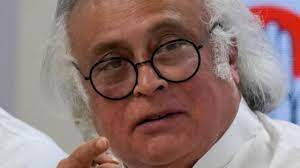Mandaviya leads a high-level meeting to assess readiness and the state of COVID-19
New Delhi: In light of the recent increase in COVID cases—at least three fatalities have been recorded in Kerela in the past 24 hours—Union Health Minister Mansukh Mandaviya convened a high-level meeting of the states and Union territories on Wednesday to assess the situation and readiness.

On the last day, 614 new cases of COVID-19 were reported from all across India; now, there are 2,311 active cases in the country.
Mandaviya emphasized at the meeting the need for the Center and the states to work together to address the new situation in the spirit of the “Whole of Government” approach and to “not panic” but to stay vigilant.
The health minister emphasized the need for simulated drills to be held in all hospitals once every three months and encouraged states to make sure that precautions are made in the winter before holidays.
According to the Union health minister, “it is important to be prepared with mock drills of hospital preparedness, increased surveillance, and effective communication with people.”
Following the Central government’s Monday alert to all states on the discovery of the initial JN.1 variety, which asked state governments to “maintain constant vigil,” a number of states issued further directives.
Reiterating that “COVID was not over yet,” Mandaviya urged states to keep an eye on new indications of COVID cases, symptoms, and case severity in order to prepare a suitable public health response.
Government data indicates that India has a notably lower number of active COVID cases than the rest of the world. “Active instances increased sharply during the last two weeks, from 115 on December 6, 2023, to 614 as of this writing. 92.8% of the patients were reported to be home-isolated, suggesting a minor illness. During the meeting, Health Secretary Sudhansh Pant said that a few states, including Kerala, Maharashtra, Jharkhand, and Karnataka, had seen an increase in the daily positive rate.
Strengthening the monitoring mechanism for whole genome sequencing of positive case samples to track the variations via the Indian SARS-CoV-2 Genomics Consortium (INSACOG) network was one of the preventative strategies recommended.
According to the health minister, it will guarantee the early identification of more recent varieties that are circulating throughout the nation and will make it easier to launch the necessary public health initiatives.
In order to monitor any novel variations, states and UTs have also been asked to increase testing and send a significant number of samples of COVID-19-positive patients and pneumonia-like illnesses to INSACOG Genome Sequencing Laboratories (IGSLs) every day for sequencing.
The extremely contagious JN.1 sublineage of the BA.2.86 variation, often known as Pirola and seeing persistent worldwide expansion, has previously been documented in instances from India.
Though it is not now a reason for alarm, the novel JN.1 variation of SARS-CoV-2 is presently the subject of close scientific examination. The health ministry said that no clustering of cases related to JN.1 has been seen in India, that all instances were deemed to be mild, and that all patients have recovered without any problems.
Furthermore, in order to facilitate fast monitoring and timely public health interventions, states have been required to provide information in real time on cases, tests, positive, etc., via the COVID site.







